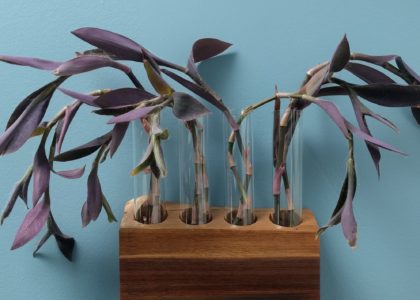
Maidenhair Fern Care – Not That Delicate
Humidity doesn’t matter as much as you’ve been told…

Humidity doesn’t matter as much as you’ve been told…

It’s time for a serious look at our expectations of houseplant care.

The term ‘overwatering’ is stopping you from understanding house plant care…

Creating a fern garden inside my shower

My snake plants enjoy getting a shower outdoors on occasion. This time, I had the privilege of working with Lee Valley Tools to review their Hozelock Pico Reel - a compact sprayer, perfect for small spaces.

Installing a metal trellis to support your Monstera deliciosa.

Here are a few books that I've thoroughly enjoyed - they'll inspire a sense of awe about the intelligence of plant life!

A post about my techniques and adventures with starting Oxalis triangularis from bulbs I purchased on eBay.

At some point, you'll have to prune and propagate your plants. Here's how to do it in style!

The plant nursery is a very different place compared to your home. Understanding these differences is the key to knowing how to care for your house plants.
A popular houseplant in the genus Adiantum – there are many species commonly sold with a reputation for being humidity-loving, “difficult divas”. I’m only going to validate one critical point of maidenhair care: given the right light, the soil MUST remain evenly moist at all times. This means you must be vigilant in observing the moisture status of the soil – the moment it feels just a bit lighter than “fully moistened” soil, it’s time to water again. If the potting medium goes beyond half dry (meaning, when you lift the pot and it feels like less than half has heavy as “fully moistened” soil), then EVERY frond will turn brown and crispy within a day. But the entire plant isn’t necessarily dead – if you cut off all these spent fronds and give the soil a nice soaking and put the plant where it has a wide view of the open sky, you may get some new fronds to emerge. If you can maintain proper light and watering over the next few months, then you should have a bushy plant again.

People usually panic when they see one entire frond die back. Hear this: a few fronds dying back is perfectly normal and inevitable. If your light is good and you are able to keep the soil evenly moist, then new fronds will grow to replace the ones that had died – everything will be fine. You can only be comfortable with frond turnover if you are confident in your growing conditions, which starts with knowing good light. What exactly is good light? Bright indirect light is best for this plant (400-800 foot-candles for most of the day), which comes from giving the plant the widest possible view of the open sky. An hour or two of direct sun is tolerable if you are keen on checking the soil moisture.


Let me start by showing you that all through the winter, the humidity in my apartment was always around 30%. I never used a humidifier or engaged in pointless misting and my plant was just fine, with acceptable frond turnover (both death and new growth were generally the same). I think the whole humidity fear-mongering came about because of people thinking that fronds will never die “if I could only keep the humidity high enough”. Meanwhile, they put the plant in a windowless corner because that’s what they interpreted as being “low-light” and the plant inevitably shed more fronds than it grew.

Know your humidity: Inkbird ITH-10 Digital Thermometer and Hygrometer
Humidity does have an effect on the biological system but it’s not a simplistic path like: dry air directly leads to dry leaves. Instead, low humidity causes faster evaporation from the leaves and the soil. This leads to the soil becoming dry quicker, requiring you to water in time before critical dryness is reached.
Now, if you approach watering as a schedule, then you could easily miss that point of critical dryness, resulting in your entire plant turning into a crispy mess. But if you use the appropriate soil moisture observation strategy, in this case “keep evenly moist”, then you will just be checking the soil every few days (or possibly every day). And remember: if your plant doesn’t have a wide open view of the sky, then just keeping the soil evenly moist won’t do anything – the plant isn’t working (photosynthesizing) and will eventually die.
Think about this: if you are dehydrated, would it help to raise the humidity so that you are breathing more humid air? No, you need the moisture where it will have the most direct benefit – drinking water. Plants drink water from their roots.


In conclusion, I’d like to summarize the care for maidenhair ferns around the HPJ philosophy (understand your conditions, do your best with care, and let Nature take its course):


I wrote ‘The New Plant Parent’ because I believe that a positive plant care experience comes from understanding what growing conditions matter most to your plants and setting realistic expectations. I think you’ll discover a deeper joy when you appreciate how plants grow as opposed to just how they look right now.
